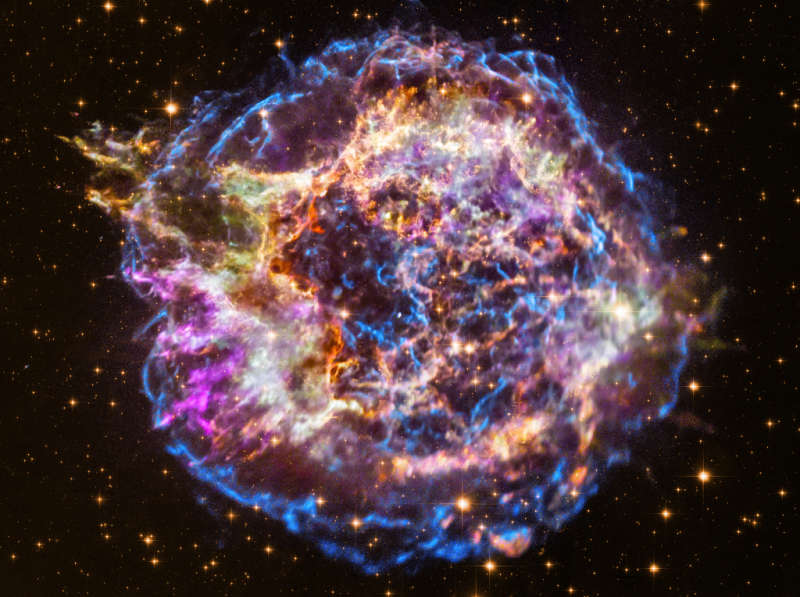Recycling Cassiopeia A

Explanation:
Massive stars in our Milky Way Galaxy live spectacular lives.
Collapsing from vast cosmic clouds, their nuclear furnaces
ignite and create heavy elements in their cores.
After a few million years, the
enriched material is blasted
back into interstellar space where star formation can begin anew.
The expanding debris cloud known as Cassiopeia A is an example
of this final phase of the stellar life cycle.
Light from the explosion which created this supernova remnant
would have been first
seen in planet Earth's sky
about 350 years ago,
although it took that light about 11,000 years to reach us.
This
false-color image, composed of X-ray and optical image data
from the Chandra X-ray Observatory and Hubble Space Telescope,
shows the still hot filaments and knots in the remnant.
It spans about 30 light-years at the estimated distance of Cassiopeia A.
High-energy X-ray emission from specific elements has been color coded,
silicon in red, sulfur in yellow, calcium in green
and iron in purple, to help
astronomers explore
the recycling of our galaxy's
star stuff.
Still expanding, the outer blast wave is seen in blue hues.
The bright speck
near the center is a neutron star,
the incredibly dense, collapsed remains of the massive stellar core.
Authors & editors:
Robert Nemiroff
(MTU) &
Jerry Bonnell
(USRA)
NASA Web Site Statements, Warnings,
and Disclaimers
NASA Official: Jay Norris.
Specific
rights apply.
A service of:
LHEA at
NASA /
GSFC
& Michigan Tech. U.

